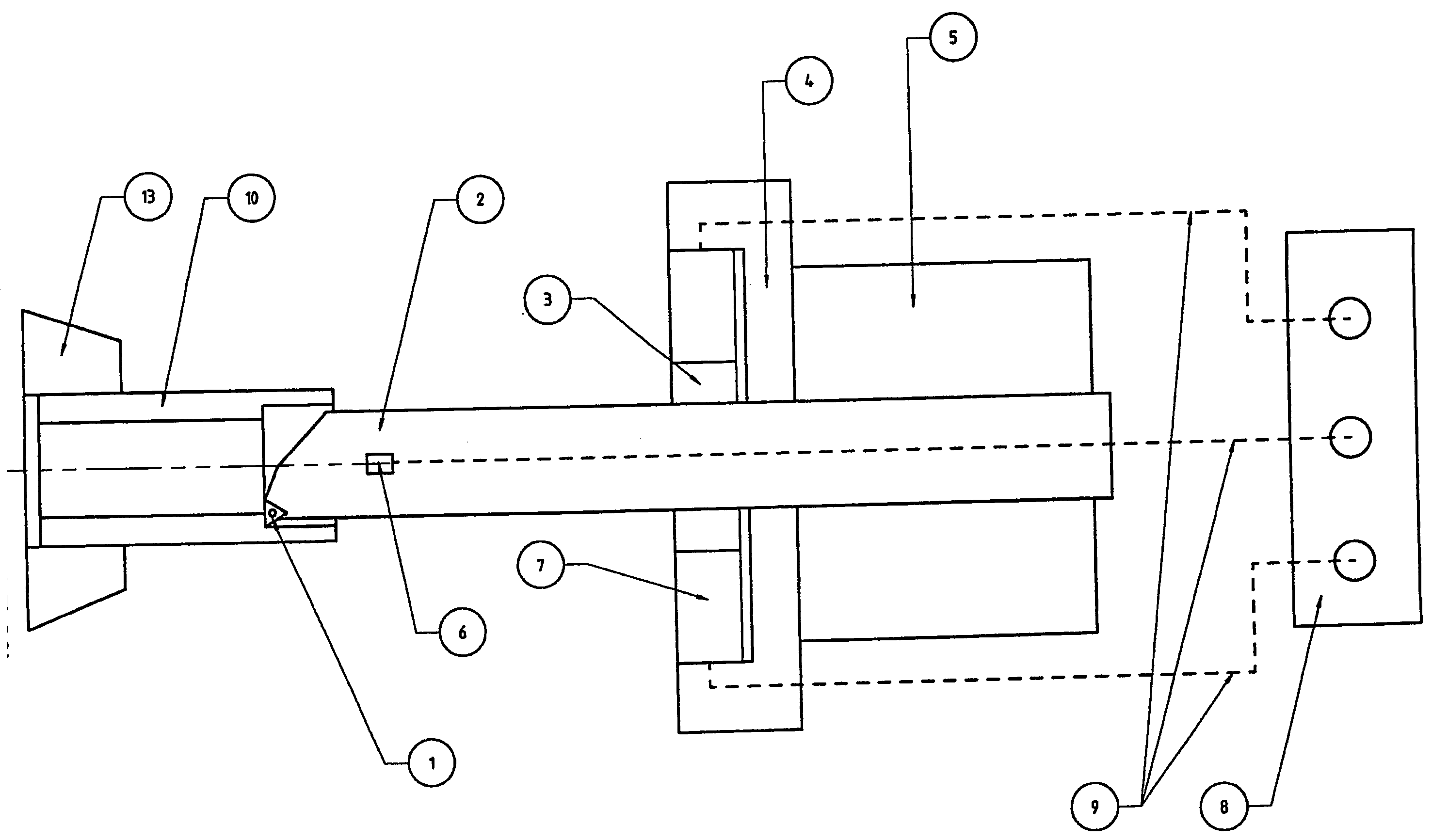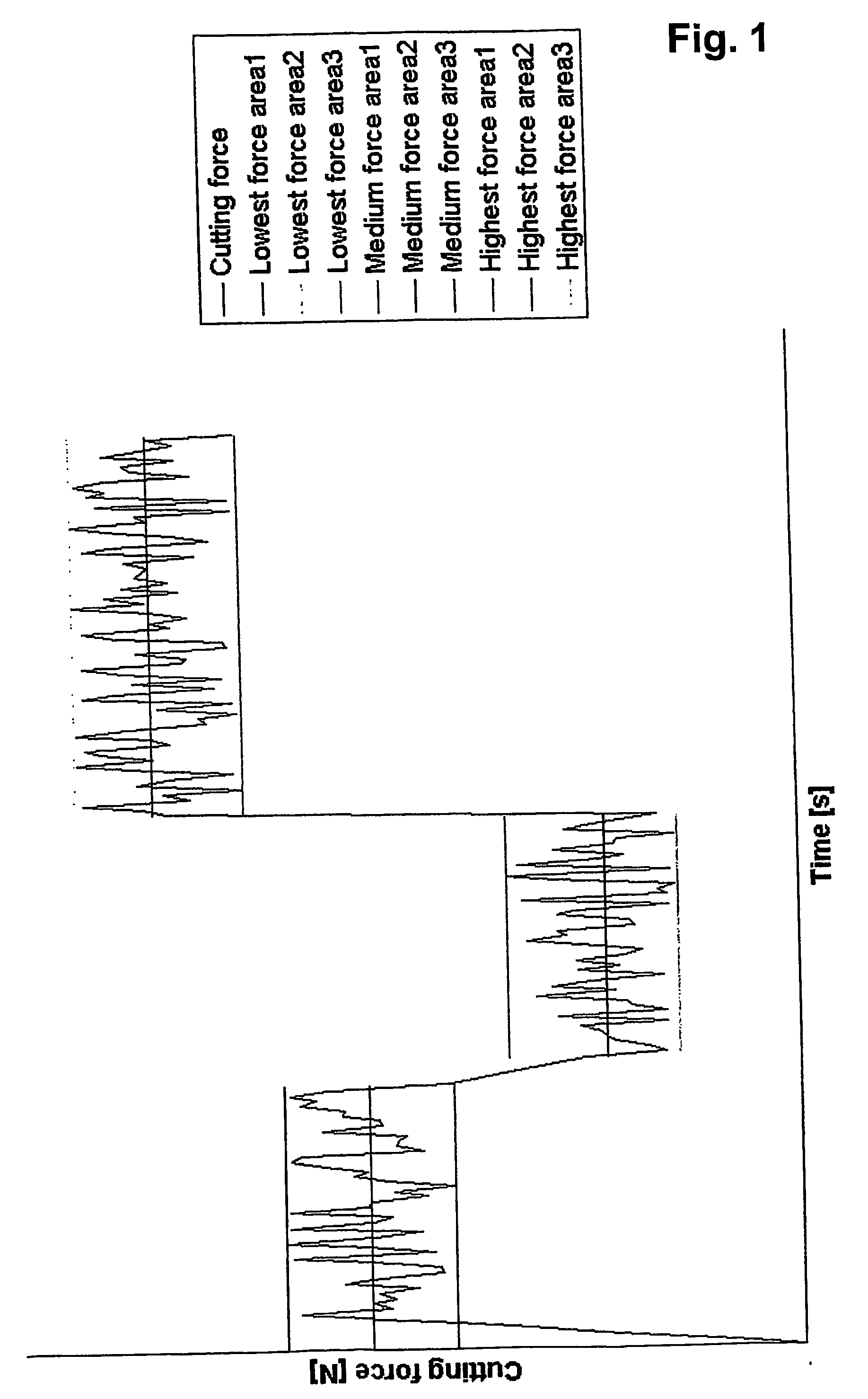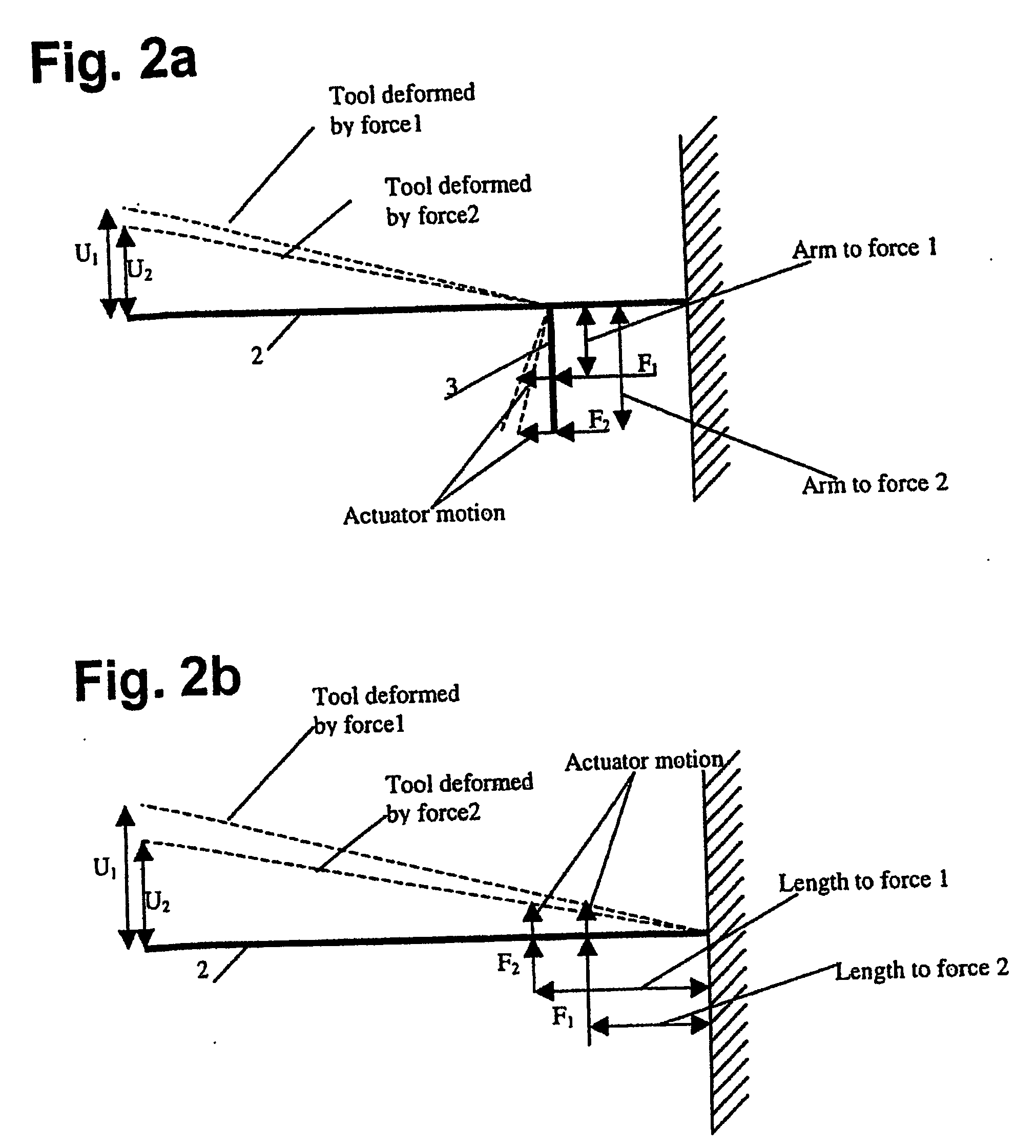Arrangement for damping of vibrations and defection in a tool holder
a tool holder and vibration damping technology, applied in the field of vibration damping and apparatus for vibration damping, can solve the problems of vibration and flexion, low possibility of increasing the diameter of the tool holder, and two types of vibrations are particularly problematic, so as to achieve the effect of substantially increasing the energy (force and motion) applied to the tool
- Summary
- Abstract
- Description
- Claims
- Application Information
AI Technical Summary
Benefits of technology
Problems solved by technology
Method used
Image
Examples
examples of embodiments
Force Transmission According to the Moment Principle
[0050]FIG. 4 shows an embodiment of the damping device according to the invention. A tool holder 2 is placed in a tool clamp 5. A tooth 1 for machining a workpiece 10 is fixed to the tool holder 2. The tool clamp 5 could be modular and adapted to different diameters and geometrical configurations (triangular, oval, square, for example) of the tool holder. Actuators 7 are fixed between the tool clamp 5 or a specific locator sleeve 4 and a lever 14 spaced outwardly from the surface of the tool holder 2. The actuators 7 are fixed to or recessed into the tool clamp 5 on the side facing the tooth 1. Alternatively, the actuators 7 could be fixed to a locator sleeve 4 specific for the actuators. The locator sleeve 4 could be spaced from the tool holder 5, so that the damping device can slide along the bar body. The force from the actuators 7 could act in a manner to deform the tool holder 2 directly, or the tool holder 2 and / or tool cla...
PUM
| Property | Measurement | Unit |
|---|---|---|
| force | aaaaa | aaaaa |
| pressure | aaaaa | aaaaa |
| dimensions | aaaaa | aaaaa |
Abstract
Description
Claims
Application Information
 Login to View More
Login to View More - R&D
- Intellectual Property
- Life Sciences
- Materials
- Tech Scout
- Unparalleled Data Quality
- Higher Quality Content
- 60% Fewer Hallucinations
Browse by: Latest US Patents, China's latest patents, Technical Efficacy Thesaurus, Application Domain, Technology Topic, Popular Technical Reports.
© 2025 PatSnap. All rights reserved.Legal|Privacy policy|Modern Slavery Act Transparency Statement|Sitemap|About US| Contact US: help@patsnap.com



